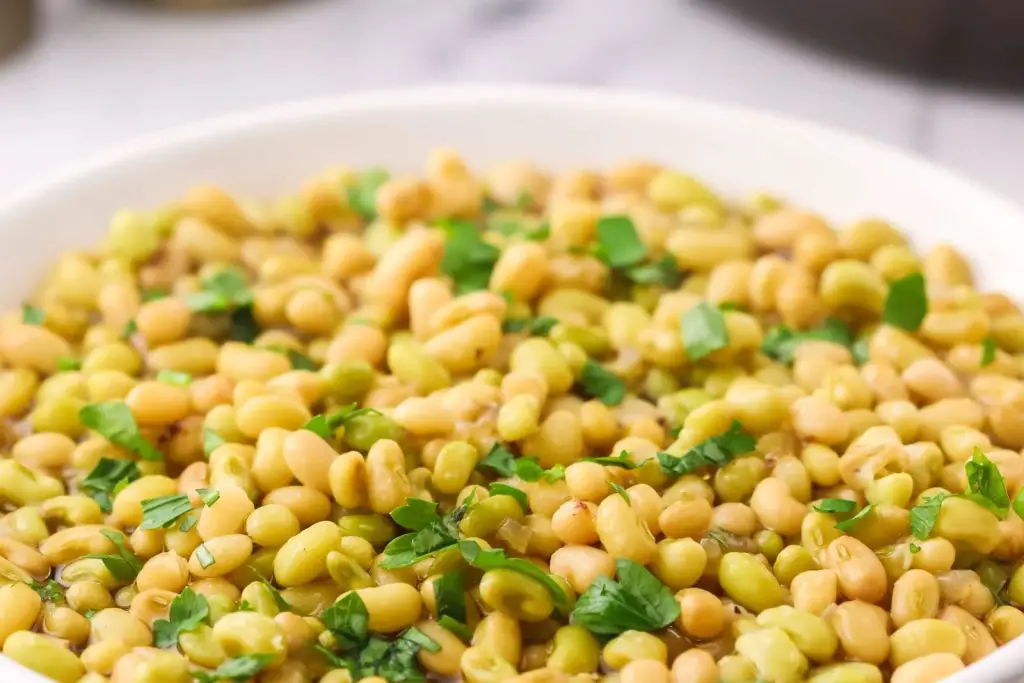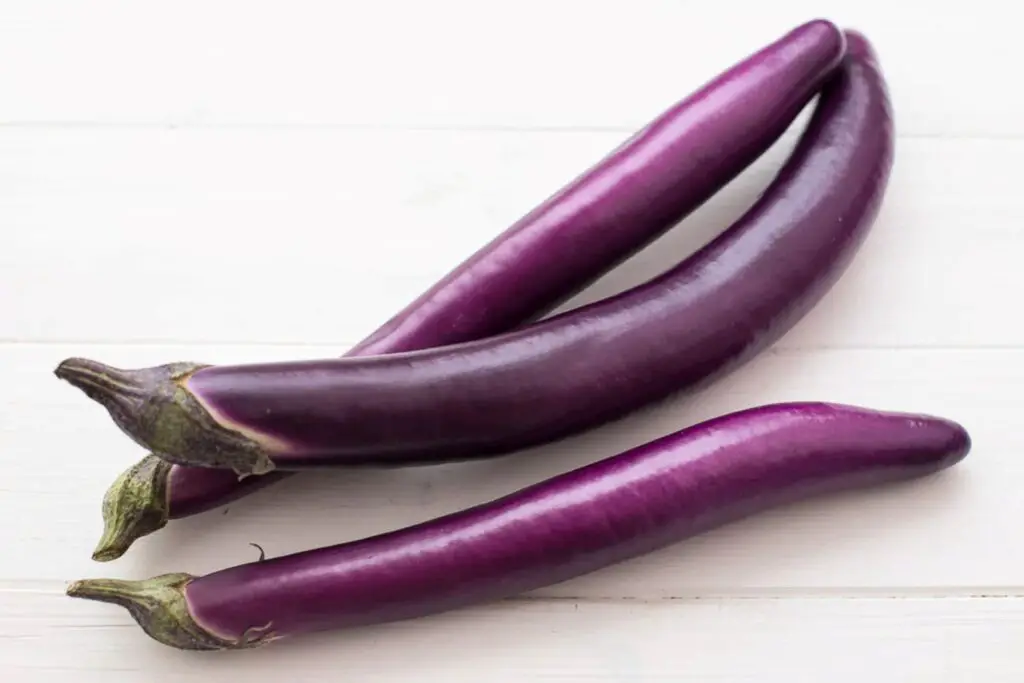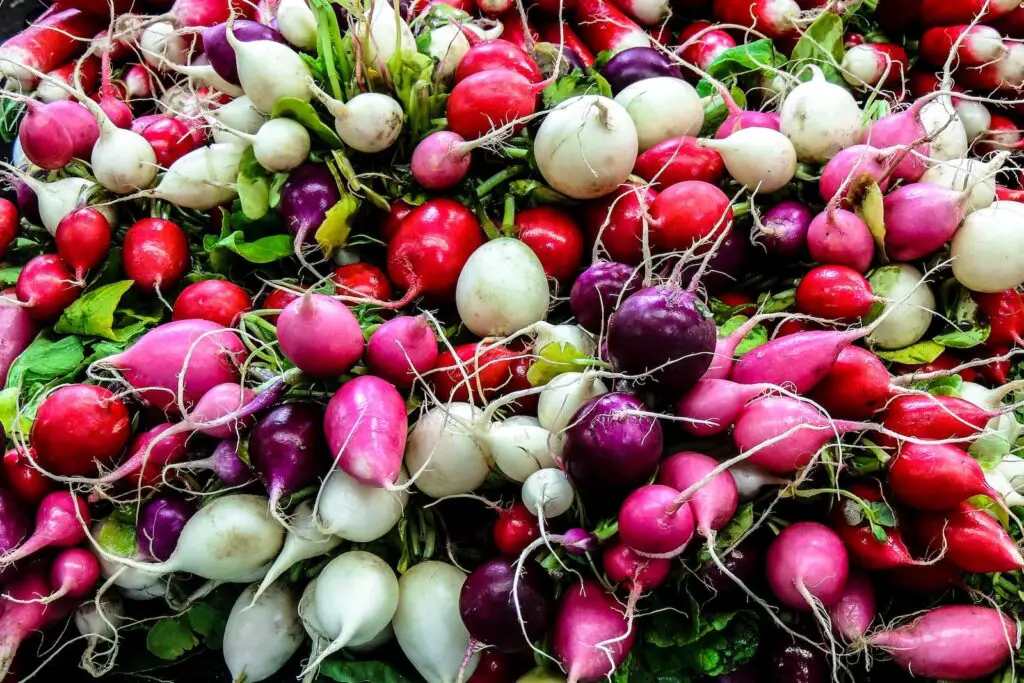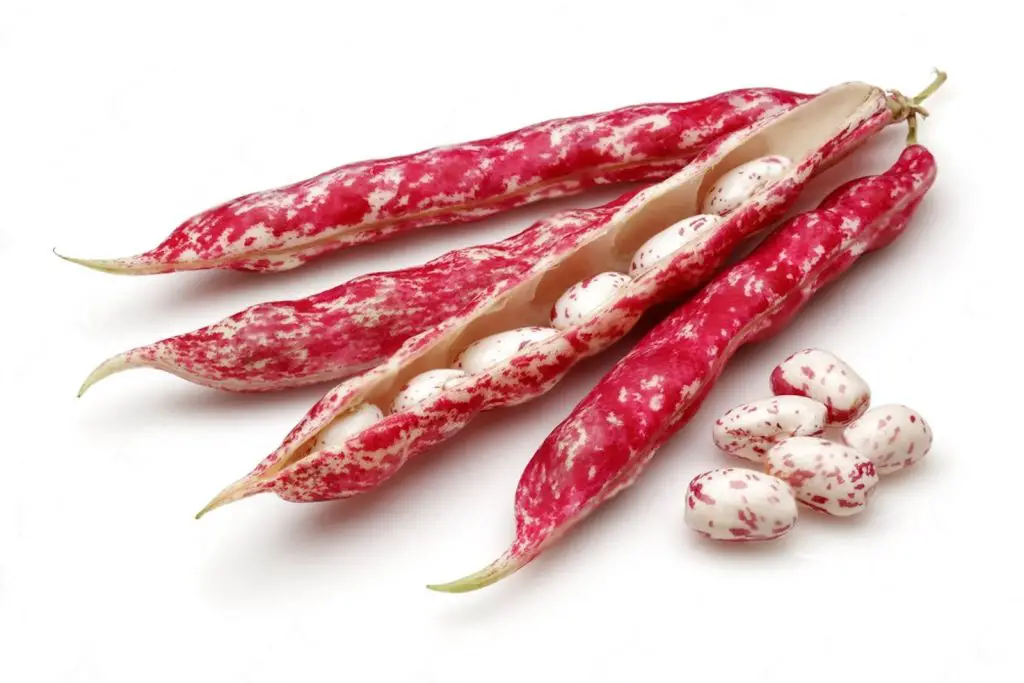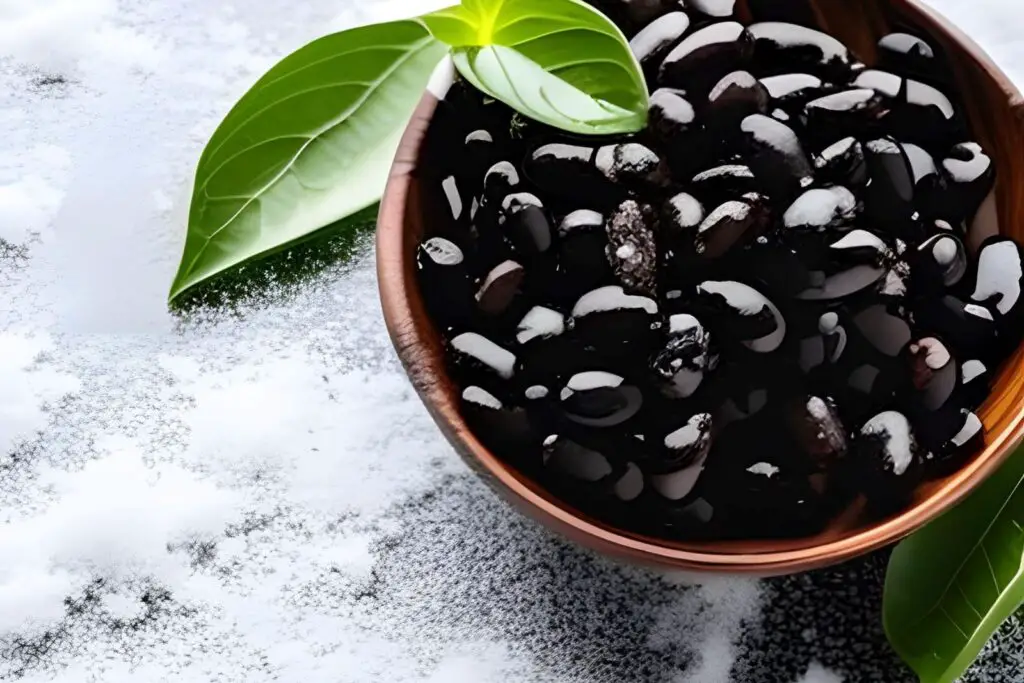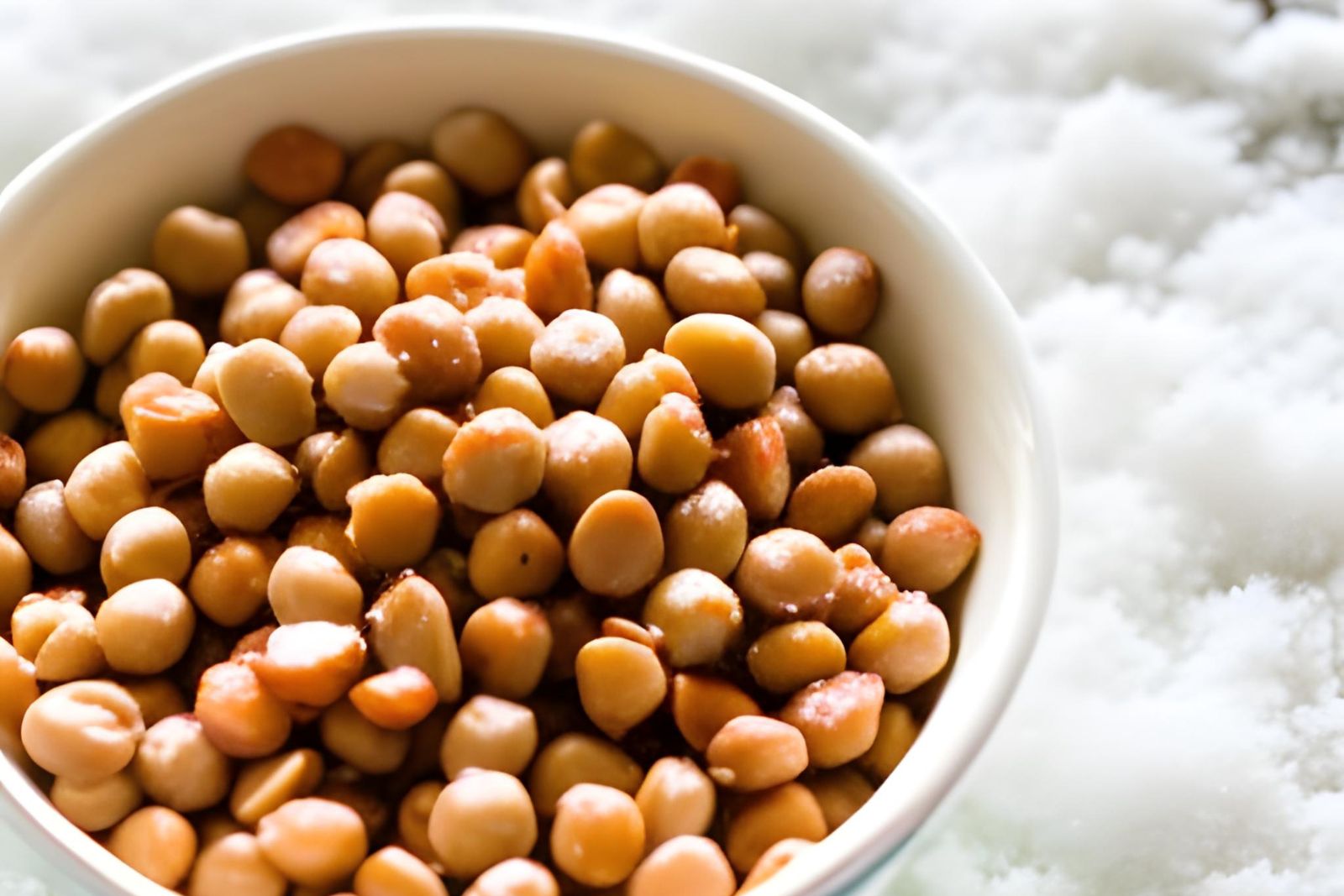
Dixie Lee peas, also known as southern peas or cowpeas, are a staple in Southern cuisine, prized for their tender texture and earthy flavor. These small, creamy peas are versatile in a variety of dishes, from soups and stews to salads and side dishes. If you find yourself with an abundance of Dixie Lee peas and want to preserve their freshness for later use, freezing them is a fantastic option. Freezing Dixie Lee peas not only extends their shelf life but also allows you to enjoy their delightful taste and nutritional benefits long after the harvest season. In this guide, we will explore the best methods for freezing Dixie Lee peas, ensuring that they maintain their quality and are readily available for your culinary creations whenever you desire.
Here is a step-by-step guide on how to freeze Dixie Lee peas:
Step 1: Prepare the peas
To ensure the best results when freezing Dixie Lee peas, it is important to begin by properly preparing them. This involves removing any stems, strings, or blemished pods that may be present. By doing so, you can enhance the overall quality and taste of the peas when they are thawed and cooked later on.
One crucial aspect of preparing the peas is washing them thoroughly under cold running water. This step helps remove any dirt, debris, or pesticide residue that may be on the surface of the peas. By rinsing them carefully, you can ensure that your frozen Dixie Lee peas are clean and safe to consume.
Using fresh and high-quality peas is also essential. When selecting Dixie Lee peas for freezing, choose ones that are plump, vibrant in color, and free from any signs of damage or deterioration. Fresh peas will freeze better and maintain their taste and texture when thawed.
Can I freeze Dixie Lee peas in their pods?
It is not recommended to freeze Dixie Lee peas in their pods. Peas in their pods have a higher water content, and freezing them in their natural state can lead to texture changes and potential deterioration. It is best to shell the peas before freezing them to preserve their quality and ensure optimal freezing results.
Step 2: Blanch the peas
Blanching the Dixie Lee peas is a critical step in the freezing process, as it helps maintain their color, flavor, and nutritional value. Blanching involves briefly immersing the peas in boiling water and then rapidly cooling them down. This technique helps to preserve the peas’ natural qualities and ensures that they retain their texture and taste when frozen.
To begin the blanching process, bring a large pot of water to a rolling boil. The pot should be large enough to accommodate the volume of peas you are blanching comfortably. While the water is heating, prepare an ice bath by filling a large bowl with cold water and adding ice cubes. This ice bath will be used to cool the peas quickly after blanching.
Once the water reaches a vigorous boil, carefully add the prepared Dixie Lee peas to the pot. It is important to blanch the peas in small batches to avoid overcrowding the pot, which can lead to uneven blanching. The blanching time will vary depending on the size of the peas, but generally, blanching for 2 to 3 minutes is recommended.
During the blanching process, it is crucial to monitor the peas closely to prevent overcooking or undercooking. Overcooking can result in mushy peas with a loss of color and flavor, while undercooking may leave the peas with an unpleasant texture. The goal is to blanch the peas just enough to inactivate enzymes and preserve their quality without significantly altering their taste and texture.
Once the blanching time is complete, promptly remove the peas from the boiling water and transfer them immediately to the ice bath. The ice bath halts the cooking process by rapidly cooling down the peas and helps preserve their vibrant green color and crispness.
Can I freeze dixie lee peas without blanching them first?
Yes, you can freeze Dixie Lee peas without blanching them first. However, blanching is recommended as it helps preserve the quality and color of the peas during freezing by slowing down enzyme activity. Blanching also helps maintain the texture of the peas when they are thawed and cooked later.
Step 3: Cool the peas
After blanching the Dixie Lee peas, the next crucial step is to cool them rapidly to halt the cooking process. Cooling the peas in an ice bath helps preserve their crispness, vibrant color, and overall quality before they are frozen.
Once the peas have been blanched for the recommended time, it is important to transfer them immediately to an ice bath. The ice bath consists of a large bowl filled with cold water and ice cubes. The cold water and ice create a rapidly cooling environment for the peas.
By placing the hot blanched peas into the ice bath, the temperature of the peas is rapidly lowered, effectively stopping the cooking process. This step is essential as it helps preserve the desired texture of the peas and prevents them from becoming mushy or overcooked.
Allow the Dixie Lee peas to sit in the ice bath for the same duration as the blanching time. This ensures that the peas are thoroughly cooled and retain their crispness. Cooling them for the same amount of time as they were boiled helps maintain consistency and prevents any residual heat from continuing to cook the peas.
During the cooling process, the ice bath not only cools the peas but also helps to preserve their vibrant green color. Rapidly cooling the peas helps lock in their natural pigments, resulting in visually appealing frozen peas.
Step 4: Drain and dry the peas
Once the Dixie Lee peas have been properly cooled in the ice bath, it is important to drain them thoroughly and remove any excess moisture before proceeding with the freezing process. This step helps prevent the formation of ice crystals during freezing, which can have a negative impact on the texture and quality of the peas.
To begin, carefully remove the peas from the ice bath, allowing any excess water to drain off. You can use a colander or strainer to facilitate the draining process. Shake the colander gently to remove any trapped water from between the peas.
After draining, it is recommended to pat the peas dry using a clean kitchen towel or paper towel. Lightly press the towel against the peas to absorb any remaining moisture. It is important to handle the peas gently to avoid damaging their delicate texture.
Removing excess moisture from the peas is crucial to prevent the formation of ice crystals during freezing. When water freezes, it expands and can cause damage to the cell structure of the peas, resulting in a loss of texture and flavor. By drying the peas thoroughly, you minimize the chances of ice crystals forming and ensure that the peas maintain their desirable qualities when thawed and cooked later on.
Step 5: Portion and package the peas
After the Dixie Lee peas have been drained and dried, the next step is to portion and package them for freezing. This step allows for convenient storage and easy access to the desired amount of peas whenever you need them.
First, decide on the portion sizes that suit your needs. You can choose to freeze the peas in individual serving sizes or in larger portions based on your usage preferences. Individual portions are convenient if you plan to use the peas in smaller quantities for recipes or side dishes. Larger portions are suitable if you intend to use the peas for family meals or larger gatherings.
Once you have determined the portion sizes, it’s time to select the appropriate packaging. Freezer-safe containers or freezer bags are commonly used for freezing peas. When using containers, ensure they are specifically designed for freezer storage. These containers should have a tight-fitting lid to prevent air and moisture from entering and freezer burn from occurring.
When filling the containers or freezer bags, leave some headspace to allow for expansion during freezing. Peas, like most foods, will expand when frozen. Leaving enough space ensures that the containers or bags do not burst or become damaged during the freezing process.
Alternatively, if using freezer bags, squeeze out as much air as possible before sealing them. This helps minimize the potential for freezer burn, which can negatively affect the texture and taste of the peas over time. Removing excess air from the bags also helps to maximize storage space in the freezer.
Can I freeze Dixie Lee peas in glass containers?
While it is possible to freeze Dixie Lee peas in glass containers, it is important to exercise caution and follow proper guidelines. Glass containers should be specifically designed for freezer use and have straight sides to allow for expansion during freezing. Additionally, it is advisable to leave some headspace in the container to accommodate expansion and prevent breakage. Alternatively, using freezer-safe plastic containers or freezer bags can be a more practical option for freezing Dixie Lee peas.
Can I freeze Dixie Lee peas in a vacuum-sealed bag?
Yes, you can freeze Dixie Lee peas in a vacuum-sealed bag. Vacuum sealing helps remove air from the bag, reducing the risk of freezer burn and preserving the quality of the peas for a longer time. Ensure that the peas are properly blanched and cooled before vacuum-sealing them to maintain their texture and flavor during freezing.
Step 6: Label and date the packages
To ensure proper organization and easy identification of the frozen Dixie Lee peas, it is crucial to label and date each package. This step helps you keep track of the contents and maintain a proper rotation system in your freezer.
Start by using a waterproof marker or labels specifically designed for freezer use. On each package, clearly write the name “Dixie Lee Peas” to indicate the contents of the package. This labeling ensures that you can quickly identify the peas without the need to open or examine each package individually.
In addition to labeling the contents, it is important to include the date of freezing on each package. Write the specific date when the peas were frozen. This information allows you to track the storage duration accurately and helps ensure that you use the oldest packages first. By following a first-in, first-out (FIFO) approach, you can maintain the quality and freshness of the peas over time.
Proper labeling and dating also enable you to implement a rotation system in your freezer. When new packages of Dixie Lee peas are added, you can easily identify the older ones and bring them forward for use. This practice helps minimize food waste and ensures that you consume frozen peas within their recommended storage period.
Step 7: Freeze the peas
After properly labeling and dating the packages of Dixie Lee peas, it’s time to freeze them. Follow these steps to ensure the best freezing results:
- Arrange in a Single Layer: Place the packaged Dixie Lee peas in the freezer, making sure to arrange them in a single layer. This allows for better air circulation around the packages, facilitating faster and even freezing. By ensuring that the peas are not overcrowded, you promote efficient freezing and help maintain their individual shapes and textures.
- Optimal Freezing Conditions: Set your freezer to its coldest setting or the recommended temperature for freezing vegetables. The ideal temperature for freezing peas is typically around 0°F (-18°C). Freezing the peas at the correct temperature helps preserve their flavor, texture, and nutritional value.
- Freezing Solid: Leave the packaged peas undisturbed in the freezer until they are frozen solid. This typically takes several hours, but the exact time may vary depending on the size and thickness of the packages, as well as the efficiency of your freezer. Freezing the peas solid ensures that they maintain their quality and integrity during storage.
- Reorganize for Space Efficiency: Once the peas are frozen solid, you can reorganize them in your freezer to maximize space. Stack the packages neatly or place them in designated freezer bins or compartments. Consider grouping similar items together for easier access. Proper organization helps you utilize the freezer space efficiently and keeps the peas well-preserved until you are ready to use them.
By following these steps and freezing the Dixie Lee peas properly, you can ensure that they remain in excellent condition and retain their freshness until you’re ready to enjoy them in your favorite dishes.
Other related questions
How do I thaw frozen dixie lee peas?
To thaw frozen Dixie Lee peas, you have a few options. One method is to transfer the desired amount of peas to a covered bowl or container and place them in the refrigerator overnight. This slow thawing process allows the peas to defrost gradually while preserving their texture and flavor. If you need to thaw them more quickly, you can place the frozen peas in a sealed plastic bag and submerge them in cold water for a few minutes until thawed. Alternatively, you can thaw the peas using the defrost setting on your microwave, being careful to follow the manufacturer’s instructions and avoid overcooking. Once thawed, the Dixie Lee peas are ready to be used in your favorite recipes.
How long can I keep frozen Dixie Lee peas in the freezer?
Frozen Dixie Lee peas can typically be stored in the freezer for an extended period. For the best quality, it is generally recommended to consume them within 8 to 12 months of freezing. While they may remain safe to eat beyond this timeframe, the peas may start to lose some of their flavor, texture, and nutritional value over longer storage periods. Proper packaging, labeling, and storage conditions, such as maintaining a constant freezer temperature, can help preserve the quality of the peas for an extended period. Regularly checking the frozen peas for any signs of freezer burn or deterioration is also advisable.
Can I refreeze Dixie Lee peas after they have been thawed?
It is generally not recommended to refreeze Dixie Lee peas after they have been thawed. Freezing, thawing, and refreezing can affect the quality, texture, and taste of the peas. The process of thawing and refreezing can lead to moisture loss, changes in texture, and potential bacterial growth, compromising the overall quality and safety of the peas. To maintain the best quality, it is advisable to only thaw the amount of Dixie Lee peas needed for immediate use and consume them without refreezing. Proper portioning and planning can help minimize the need for refreezing and ensure the best taste and texture of the peas.
How do I know if my frozen Dixie Lee peas have gone bad?
To determine if your frozen Dixie Lee peas have gone bad, there are a few signs to look out for. Firstly, inspect the peas for any visible signs of freezer burn, such as dry, discolored, or shriveled areas. Secondly, check for the presence of ice crystals or frost on the peas, as excessive moisture can indicate deterioration. Additionally, a sour or off-putting odor may indicate spoilage. Lastly, if the texture of the peas feels excessively mushy or slimy, it’s a strong indication that they have gone bad. If you notice any of these signs, it is best to discard the peas to ensure your safety and enjoy optimal quality.
Can I use frozen dixie lee peas with the fresh ones?
Yes, you can use frozen Dixie Lee peas alongside fresh ones in your recipes. However, there are a few factors to consider. Frozen peas have already undergone blanching and freezing, which may affect their texture and taste compared to fresh peas. Frozen peas are generally softer and may require less cooking time. It’s important to adjust your cooking method and timing accordingly to ensure that both the fresh and frozen peas are cooked to your desired level of doneness. By combining fresh and frozen peas, you can enjoy the convenience of using frozen peas while still incorporating the fresh flavor and texture of the fresh ones in your dishes.
Can I freeze Dixie Lee peas with other vegetables?
Yes, you can freeze Dixie Lee peas with other vegetables. However, it is important to consider the compatibility of the vegetables in terms of their freezing characteristics and desired end use. Vegetables with similar freezing times and textures are ideal for freezing together. It is recommended to blanch the vegetables individually before combining them for freezing to ensure that each vegetable retains its quality and flavor.
Can I freeze Dixie Lee peas that have been seasoned or flavored?
It is generally not recommended to freeze Dixie Lee peas that have been heavily seasoned or flavored. Seasonings and flavors can intensify during freezing and may result in an overpowering taste. If you prefer to freeze flavored peas, it’s advisable to lightly season them or add minimal flavors that will complement a variety of recipes, allowing for more versatility when using the frozen peas later.

